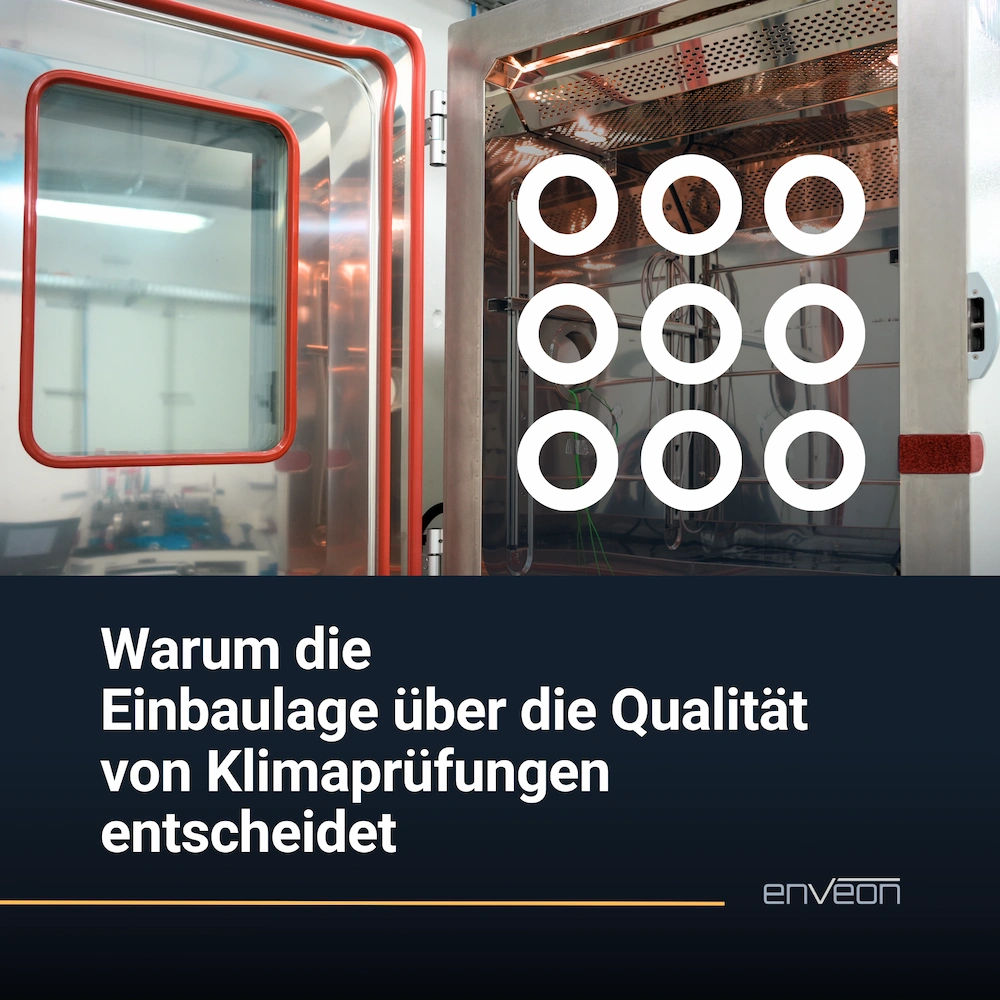Temperature and humidity tests are a fixed part of product validation – but one detail is often underestimated: the installation position.
The positioning of a test specimen in the climate chamber crucially influences how realistic and reproducible the results are.
What does installation position mean ?
The installation position describes the spatial orientation in which a component is mounted during the test – whether vertical, horizontal, or inclined. This seemingly small decision has major impacts on the test result.
Why is the installation position so important?
💨 Temperature distribution & heat dissipation:
Airflows within the climate chamber ensure that components at different positions heat up to different degrees. Especially in chambers with air circulation, there can be temperature differences between the top and bottom.
💧 Humidity distribution & condensation:
Humidity follows physical laws: cold surfaces attract condensate. This means that the position of the test specimen influences where moisture forms and accumulates – with direct effects on corrosion, material behavior, and electrical properties.
📏 Reproducibility & standards:
Standards such as DIN EN 60068 stipulate that products must be tested in their actual installation position. Only this way can realistic and reproducible results be achieved.
How to ensure that the installation position is correctly considered?
✅ Use mounting aids: Proper mounting ensures that the test specimen is positioned exactly as it will be installed later.
✅ Do not forget documentation: Without a precise description of the installation position, test results cannot be exactly traced or repeated later.
✅ Consider materials of the mounting: Especially in humidity tests, holders or adapters must not cause undesirable effects – e.g., through condensate formation or material expansion.
Conclusion
The installation position is not a minor detail but a central factor for the meaningfulness of climate tests. Anyone who is careless here risks distorted results – and thus products that behave differently in real use than they did in testing.
At enveon, we ensure that climate tests are carried out not only according to standards but also in a practical manner. Only this way can real weaknesses be detected early – before they become a problem for the customer.
How do you ensure realistic test conditions?



